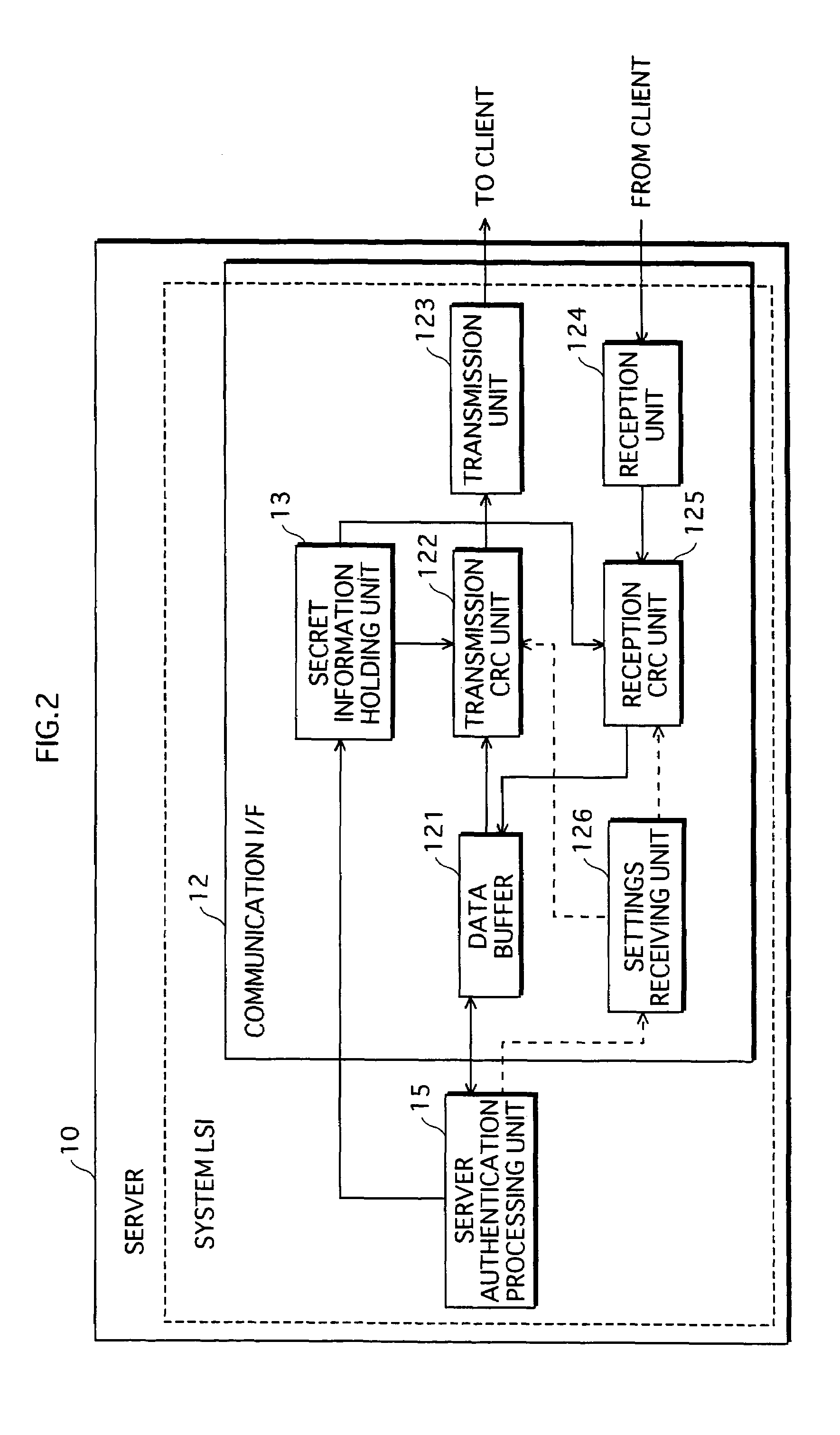Transmission/reception system
a technology of transmission and reception, applied in the field of transmission/reception system, can solve the problem that content data cannot be used correctly, and achieve the effect of reliable authentication processing
- Summary
- Abstract
- Description
- Claims
- Application Information
AI Technical Summary
Benefits of technology
Problems solved by technology
Method used
Image
Examples
first embodiment
[0124]
[0125]FIG. 1 shows an overview of the AD of the first embodiment.
[0126]The AD includes a server 10, a client 20, a router 30 and a hub 40, the server 10 and the client 20 being connected in a star formation around the hub 40. Note that clients other than the client 20 are also connected to the hub 40, but are omitted from the drawing. Furthermore, it is assumed that the hub 40 does not perform Cyclic Redundancy Check (CRC) code error detection.
[0127]The router 30 is the only device in the AD network that is connected to a network outside the AD (hereinafter, also referred to as an external network). The server 10 obtains contents from the external network via the router 30, and stores the contents in a content storage distribution unit 11. When a content distribution request is received from the client 20, the server 10 first confirms, according to authentication processing, that the client 20 is a device in the AD, and then distributes the content to the client 20. The distri...
second embodiment
[0251]
[0252]In the described first embodiment, the authentication frame is prevented from reaching other networks across the router 30 in the authentication processing. This means that contents stored in the server 10 are shared only in a sub-network one subordinate to the router 30. From another point of view, it can be said that the range of the AD is limited to one sub-network.
[0253]However, if the range of the AD is limited to one sub-network, a problem occurs that, for example, the user who operates different networks upstairs and downstairs in his or her home will be unable to use contents stored in the downstairs server in an upstairs device.
[0254]For this reason, in the present embodiment, the MAC addresses of the server and the client are registered in advance in the router, and if a frame for one of the registered MAC addresses is received, the frame is transferred without error detection using a CRC code. This means that when an authentication frame is transmitted by the ...
third embodiment
[0295]
[0296]In the second embodiment, the router registers, in advance, the MAC addresses of the server and the client, and when it receives a frame for one of the registered MAC addresses, transfers the frame without performing error check with the CRC code. This prevents frames transmitted by the sever to the client via the router from being discarded by the router, even if the communication interface of the router does not support special CRC mode.
[0297]However, with this method the router transfers frames from the server to the router without performing error detection, even if an error occurs on the communication path. This is particularly problematic in an environment in which the network is often busy.
[0298]In light of this problem, the present embodiment enables special CRC mode error detection in the router, by providing a communication interface that supports special CRC mode in the router. This prevents the router from transferring a frame in which an error has occurred. ...
PUM
 Login to View More
Login to View More Abstract
Description
Claims
Application Information
 Login to View More
Login to View More - R&D
- Intellectual Property
- Life Sciences
- Materials
- Tech Scout
- Unparalleled Data Quality
- Higher Quality Content
- 60% Fewer Hallucinations
Browse by: Latest US Patents, China's latest patents, Technical Efficacy Thesaurus, Application Domain, Technology Topic, Popular Technical Reports.
© 2025 PatSnap. All rights reserved.Legal|Privacy policy|Modern Slavery Act Transparency Statement|Sitemap|About US| Contact US: help@patsnap.com



